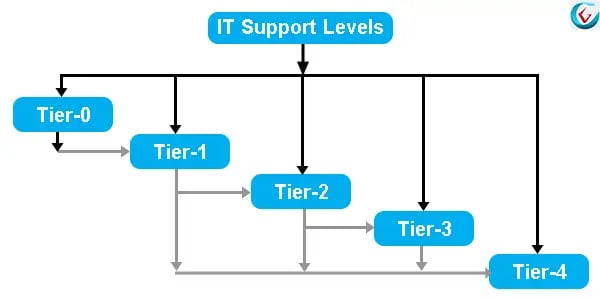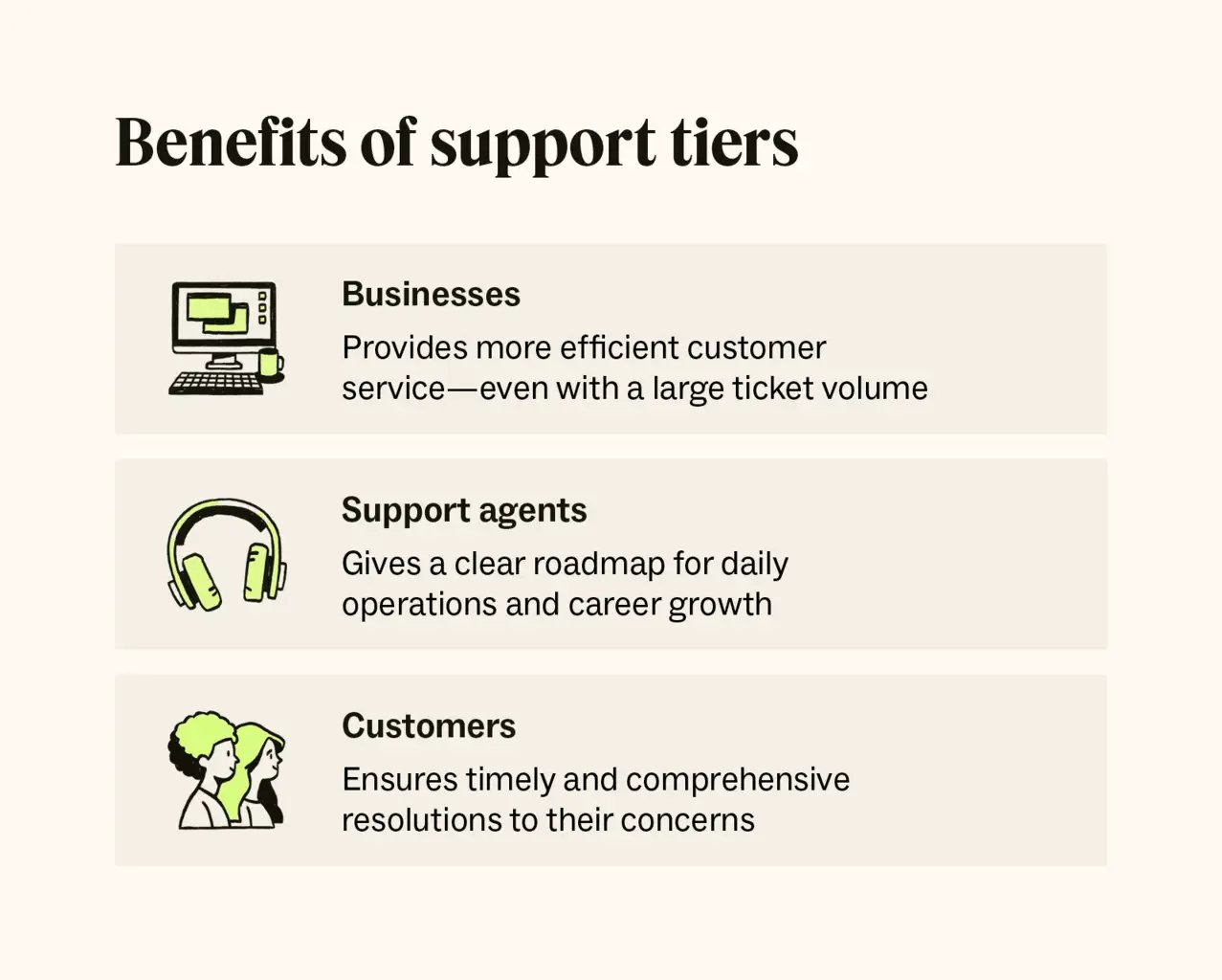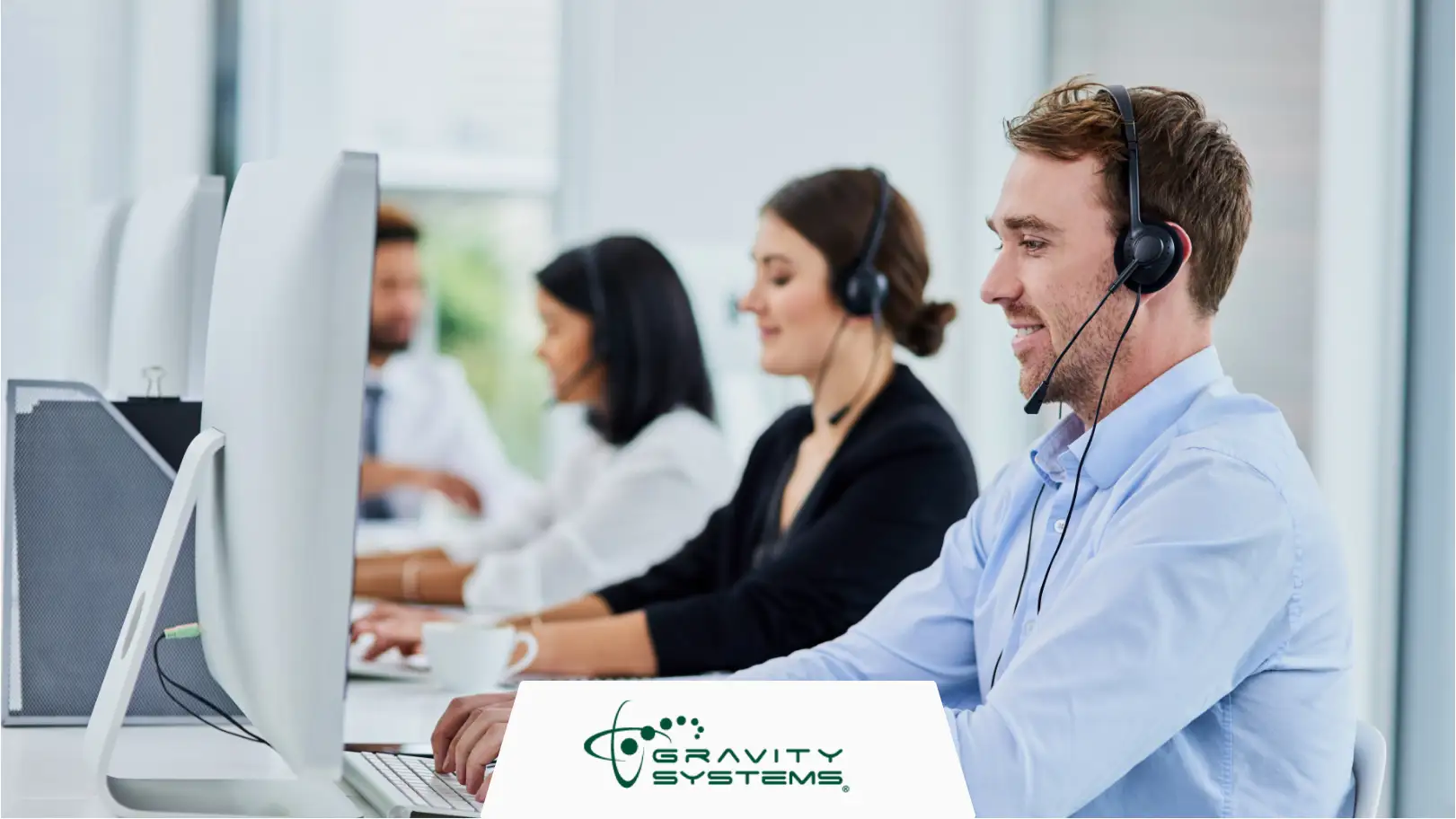The Differences Between IT Support Tiers: What You Need to Know
When you encounter a technical issue that disrupts your workflow, the last thing you want is to get stuck in a loop of unhelpful automated responses or be bounced from one support agent to another without getting closer to a solution.
Now more than ever, customers seek personalization in communication and a tailored approach to their issues. In fact, research shows that 84% of customers say that being treated like a person, not a ticket, is very important to winning their business.
As Kent Morris, President of Gravity Systems, says, "In an era of heightened IT expectations, businesses that thrive are those with robust, responsive support infrastructures."
Understanding the structure of IT support tiers can significantly impact how quickly and effectively your technical issues are resolved, ensuring your business operations run smoothly.
What are IT Support Tiers?
IT support tiers, or levels of IT technical support, are structured layers of technical assistance companies provide to address customer's technical problems. These tiers are designed to offer a streamlined and efficient approach to troubleshooting, ensuring that the customer's issue is resolved by the appropriate level of expertise and in a timely manner.
Tired of Inconsistent IT Support?
Get reliable and consistent IT services with Gravity Systems.
Learn More
Why is IT Support Important?
Today, IT support isn't just a supplementary service; it's a critical backbone of business operations. Research shows that the IT support market is expected to grow by 11.2% every year from 2022 to 2030. Effective IT support ensures business continuity, minimizes downtime and maintains customer trust.
When technical issues arise, swift and competent support can differ between a minor hiccup and a significant operational setback. Moreover, a robust IT support system enhances employee productivity by reducing the time and frustration spent on technical problems, allowing them to focus on their core responsibilities.
|
More resources you might like: |
Tiers of IT Support Explained: TI, T2, T3, T4
Beginning with Tier 0, which often involves self-help resources, the complexity of support escalates through the tiers. Understanding these tiers is essential for businesses to effectively address their technical support needs, ensuring that issues are resolved promptly and by the appropriate level of expertise.

Source: CertGuidance
Tier 0 Support: Self-Service
At the foundational level, Tier 0, also known as 0 support, represents self-help resources. This tier encourages users to solve common problems independently without human interaction, using knowledge bases and frequently asked questions. It's a cost-effective support layer empowers users to find solutions quickly for the most common issues they might encounter.
Tier 1: Basic Support
Tier 1 is the first point of human contact in the support structure. This level, often called the service desk or customer service, deals with basic issues that can be resolved quickly without in-depth technical knowledge.
Support staff at this level have access to a range of resources to help them guide users through standard troubleshooting steps to resolve the issue at hand.
Tier 2: Advanced Technical Support
When a technical problem surpasses the capabilities of Tier 1, it escalates to Tier 2, the realm of more advanced technical support. Here, more experienced and specialized technicians tackle complex issues that require a deeper understanding of the system or product.
They have the expertise to delve into more intricate problems and provide solutions that go beyond basic troubleshooting.
Tier 3: Expert Support
The pinnacle of IT support tiers is Tier 3, where the most advanced technical issues are addressed. This tier involves experts with high technical knowledge and the ability to provide bespoke solutions.
If a problem reaches this level, it often means it requires significant attention from someone with a comprehensive understanding of the technology or system in question.
Tier 4: Specialized Teams
Some organizations have a level beyond Tier 3, where highly specialized and technical issues are addressed by expert teams or individuals.
These experts work on critical problems that may affect the core of the technology or service, offering solutions that are not just fixes but improvements to the overall system or product.
What is the Difference between IT Support Tiers
|
Aspect/Tier |
Tier 0 (Self-Service) |
Tier 1 (Basic Support) |
Tier 2 (Advanced Support) |
Tier 3 (Expert Support) |
|
Definition |
Self-help resources for users to resolve common issues independently. |
The first point of human contact for handling basic issues and inquiries. |
Handles more complex issues that Tier 1 cannot resolve. |
Deals with the most advanced and technical issues, often requiring specialized knowledge. |
|
Focus |
Frequently asked questions, knowledge bases, and automated solutions. |
Basic troubleshooting, issue logging, and resolution of straightforward problems. |
In-depth technical support, involving more detailed troubleshooting and specialized knowledge. |
Highly technical or specialized support, often involving the system or product's core technical team. |
|
Staff |
Automated systems or user-guided resources. |
Frontline support staff with general knowledge and troubleshooting skills. |
More experienced and specialized technicians with deeper system or product knowledge. |
Experts or specialists with advanced understanding and high-level problem-solving skills. |
|
Examples |
Online FAQs, forums, user manuals, and automated chatbots. |
Password resets, account unlocks, basic software issues, and initial diagnostics. |
Software configuration issues, network troubleshooting, and more complex software or hardware problems. |
Deep system-level issues, code-level errors, and advanced network problems. |
|
Escalation |
No human interaction, user-dependent resolution. |
Escalates unresolved issues to Tier 2 for more advanced support. |
Escalates complex or unresolved issues to Tier 3 for expert intervention. |
Involves product developers, senior experts, or external support for resolution. |
Advantages of a Tiered Technical Support
Implementing a tiered support system enhances efficiency by ensuring that issues are addressed at the appropriate level of expertise, preventing unnecessary escalation.
It optimizes resource allocation, with simpler problems resolved at lower levels, freeing up advanced experts to focus on complex challenges. This stratification also fosters a better customer experience, as issues are resolved swiftly and competently.

Source: Zendesk
Elevate Your Tech Support with Gravity Systems
The frustration of unresolved technical issues can be a significant pain point for businesses, emphasizing the need for a reliable IT support system.
Gravity Systems, with over 25 years of experience in IT support, understands the nuances of technical challenges and offers robust support across all tiers.
|
Discover Trusted IT Support Services in Austin, Texas |
Trusting us means ensuring that your IT infrastructure is backed by seasoned professionals adept at navigating and resolving various technical issues.
For peace of mind and expert support, contact us to schedule a free consultation and ensure your business remains on the cutting edge of efficiency and reliability.

_NO_BCS_bigger_weird_green_clear.png?width=100&name=for-website_large(save-at-500-tall)_NO_BCS_bigger_weird_green_clear.png)





